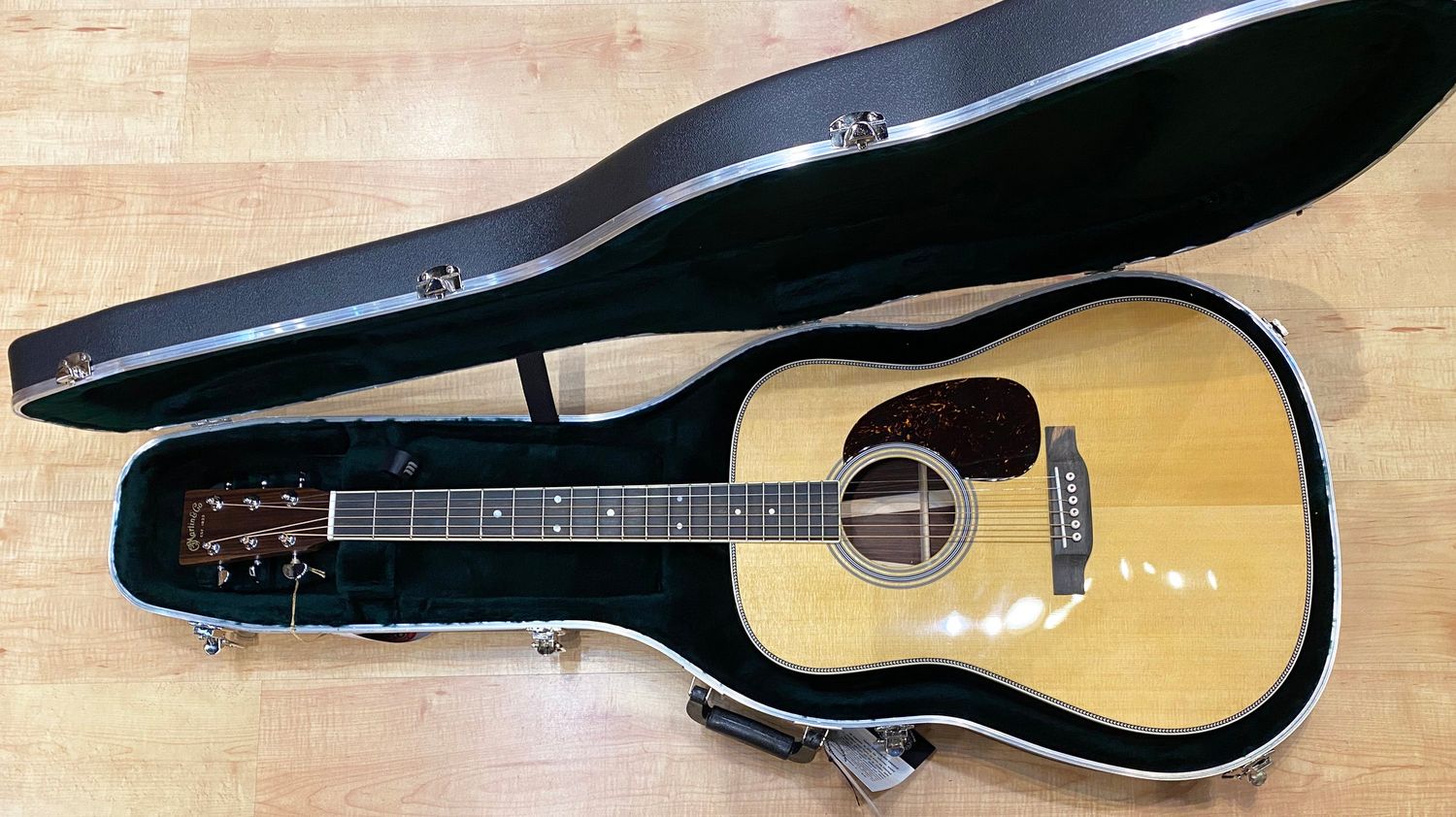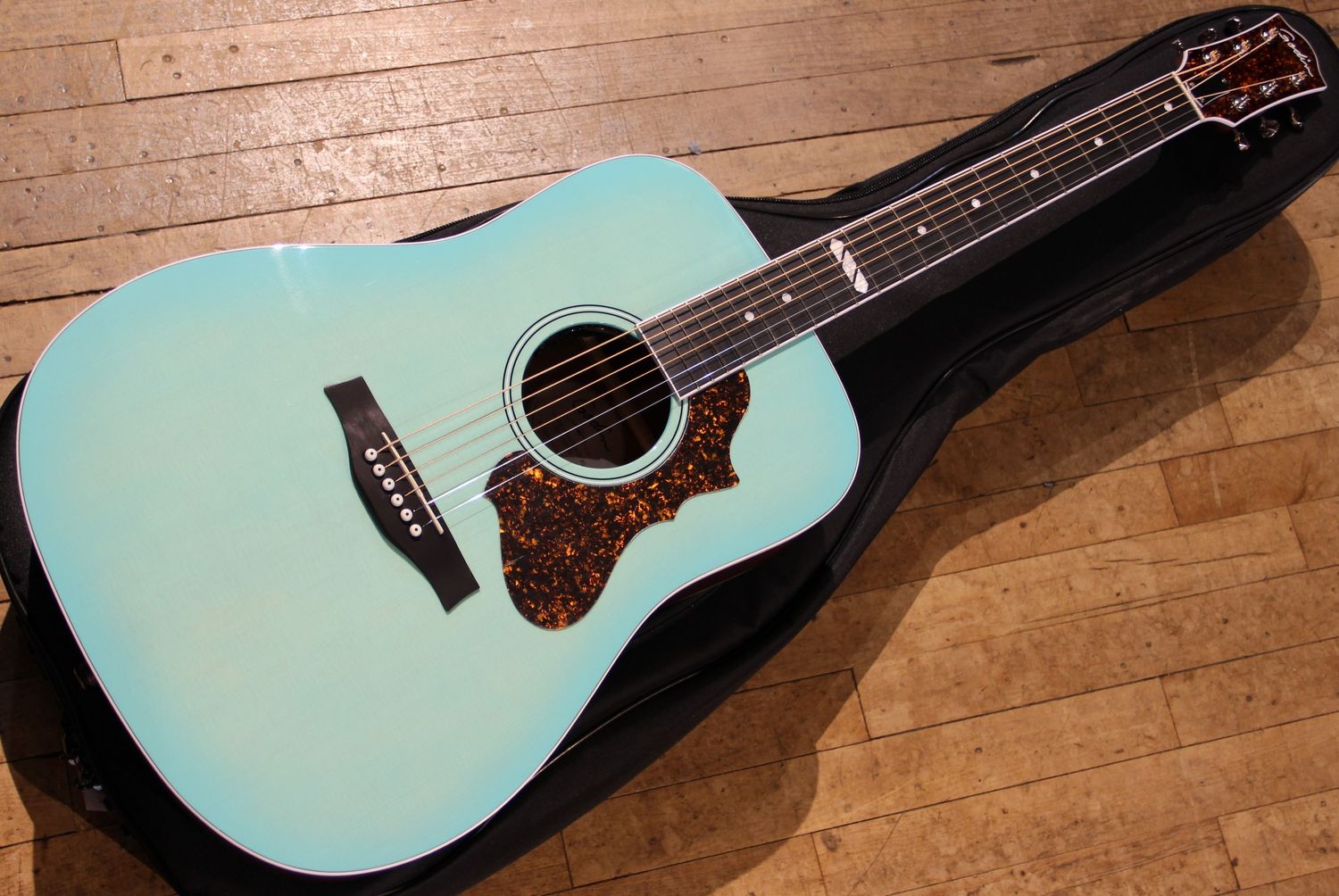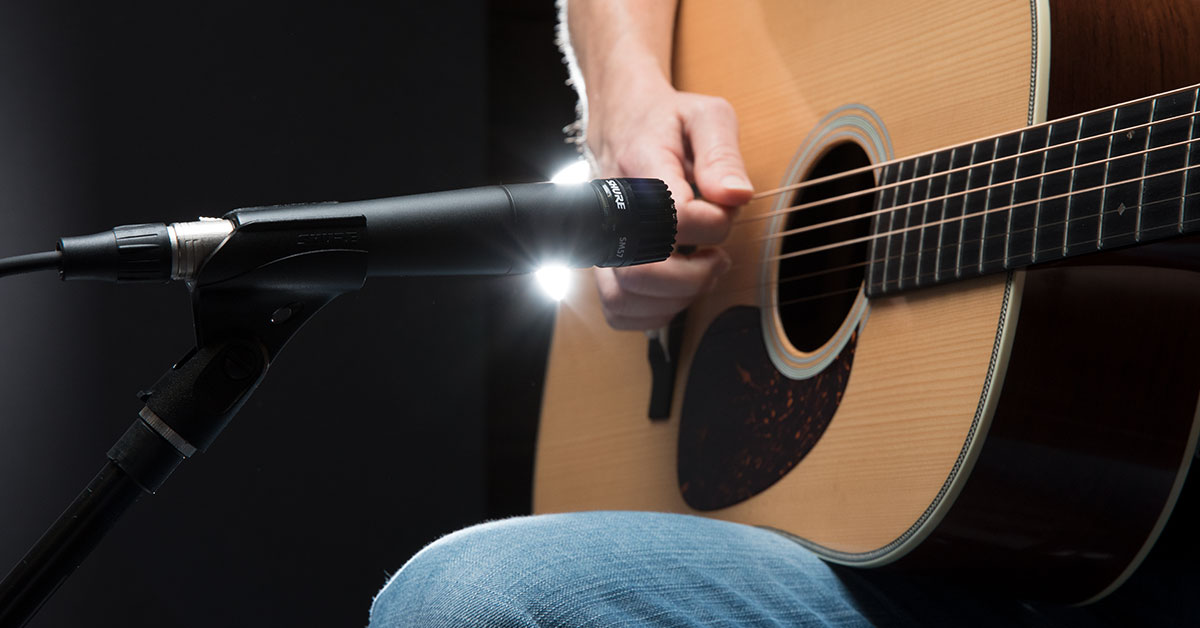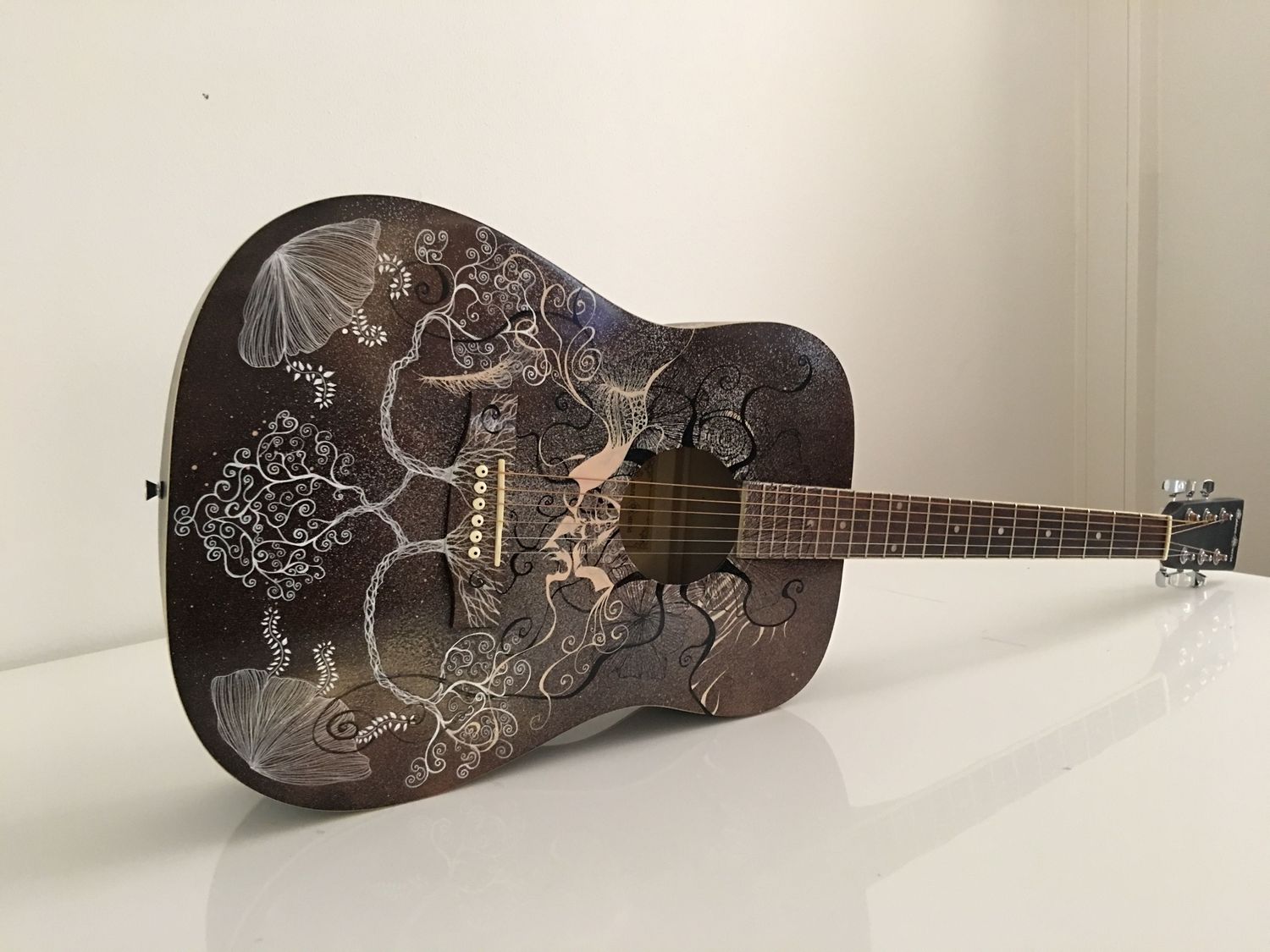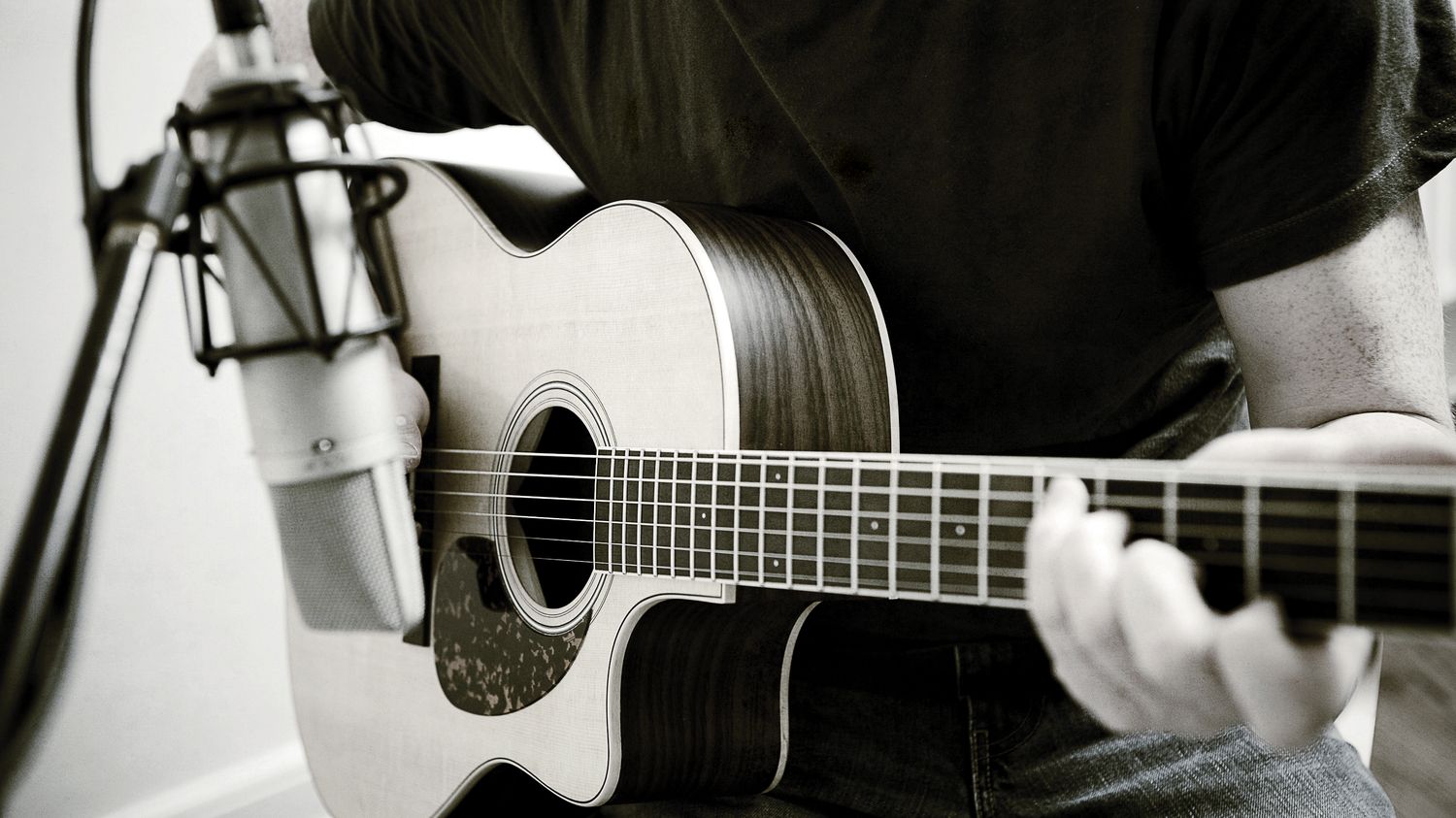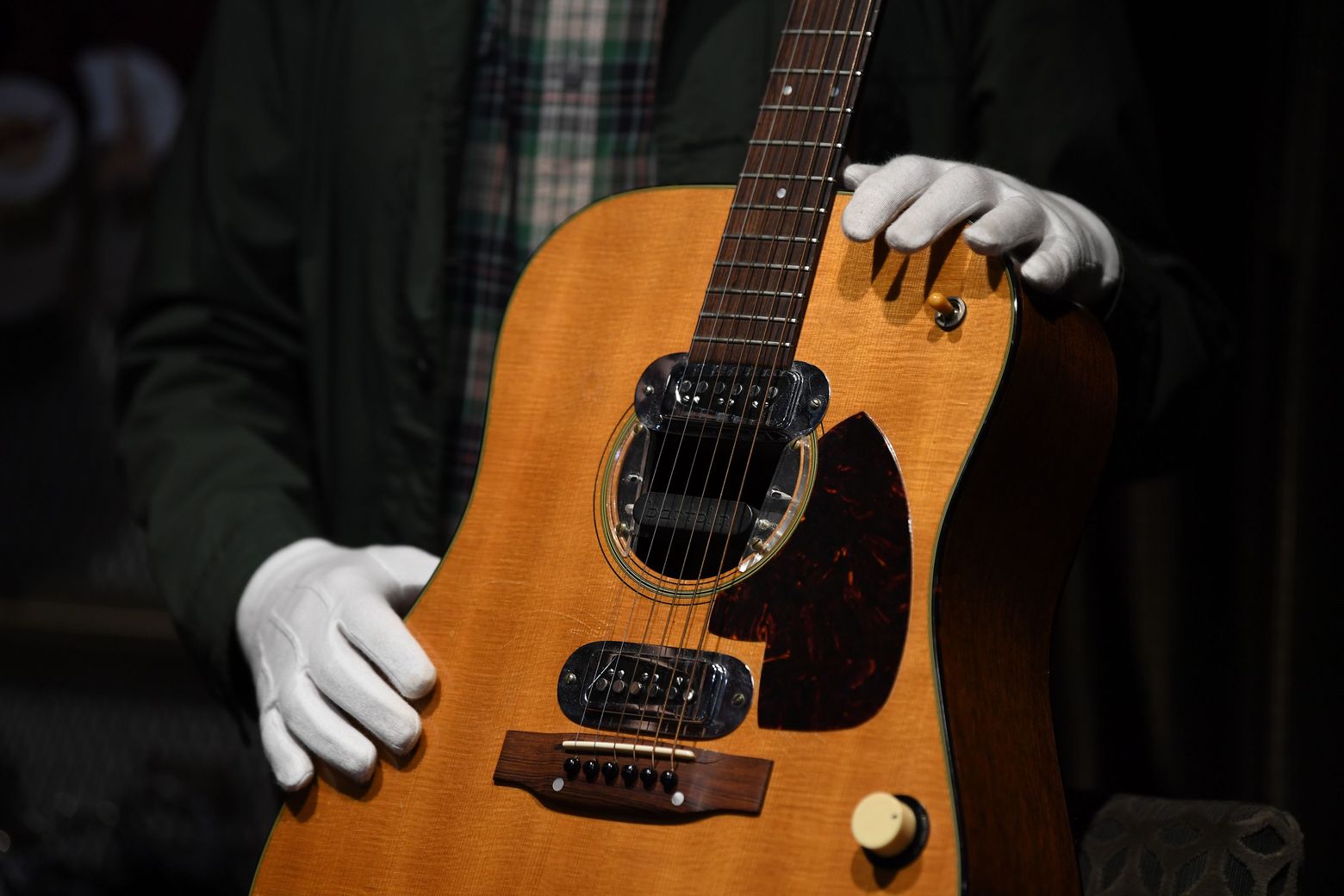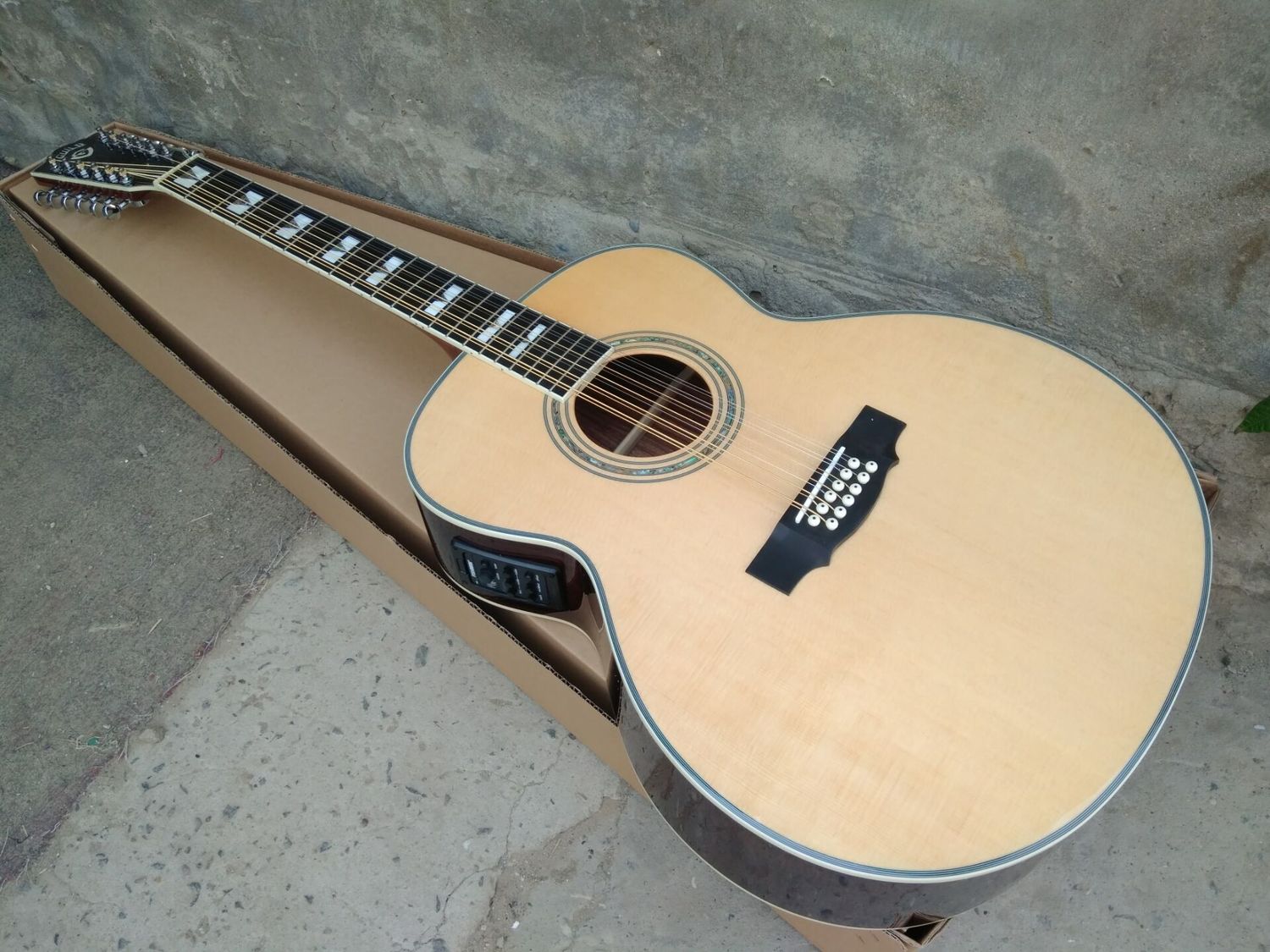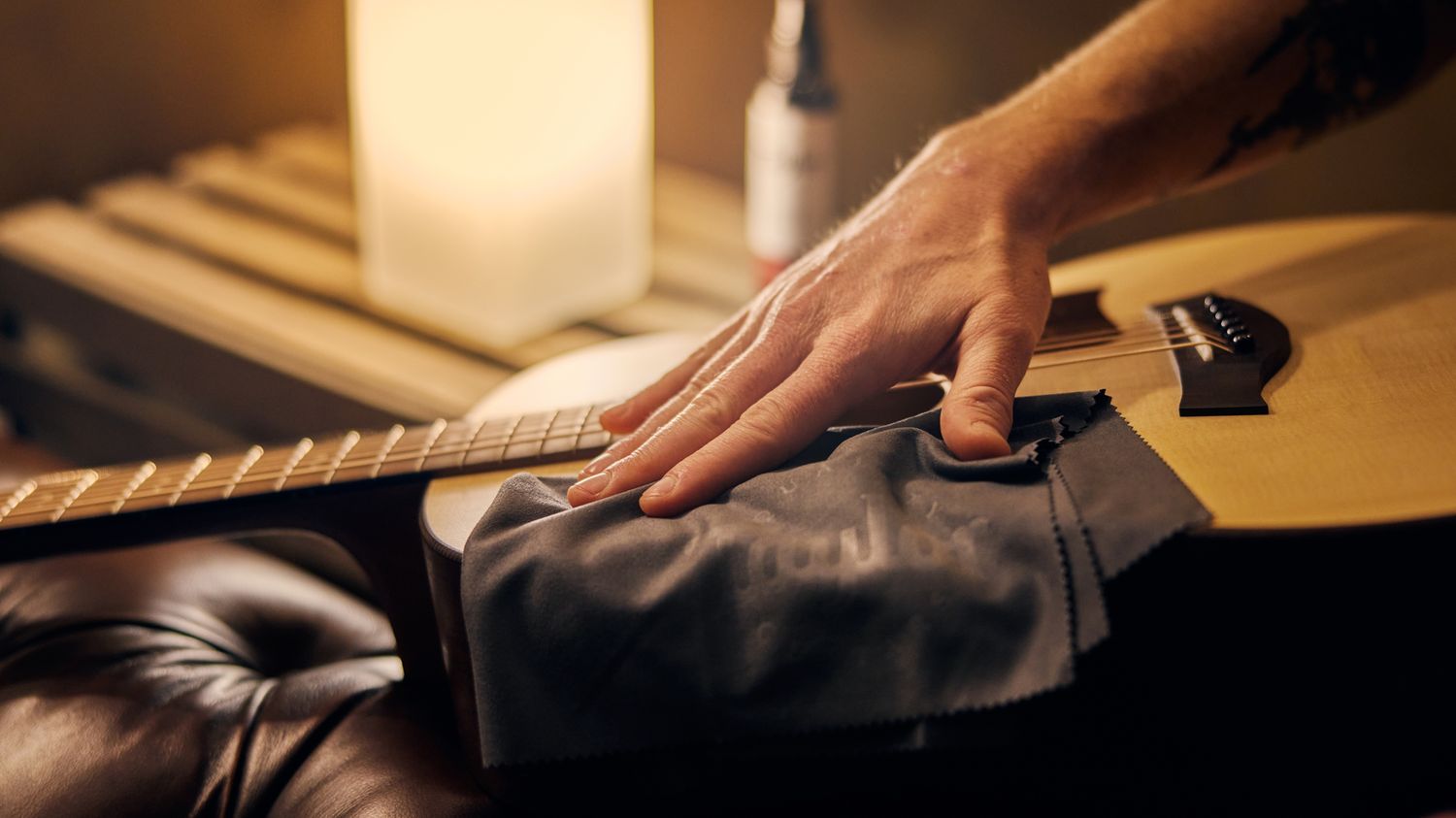Home>Production & Technology>Acoustic>How To Use A Capo On Acoustic Guitar
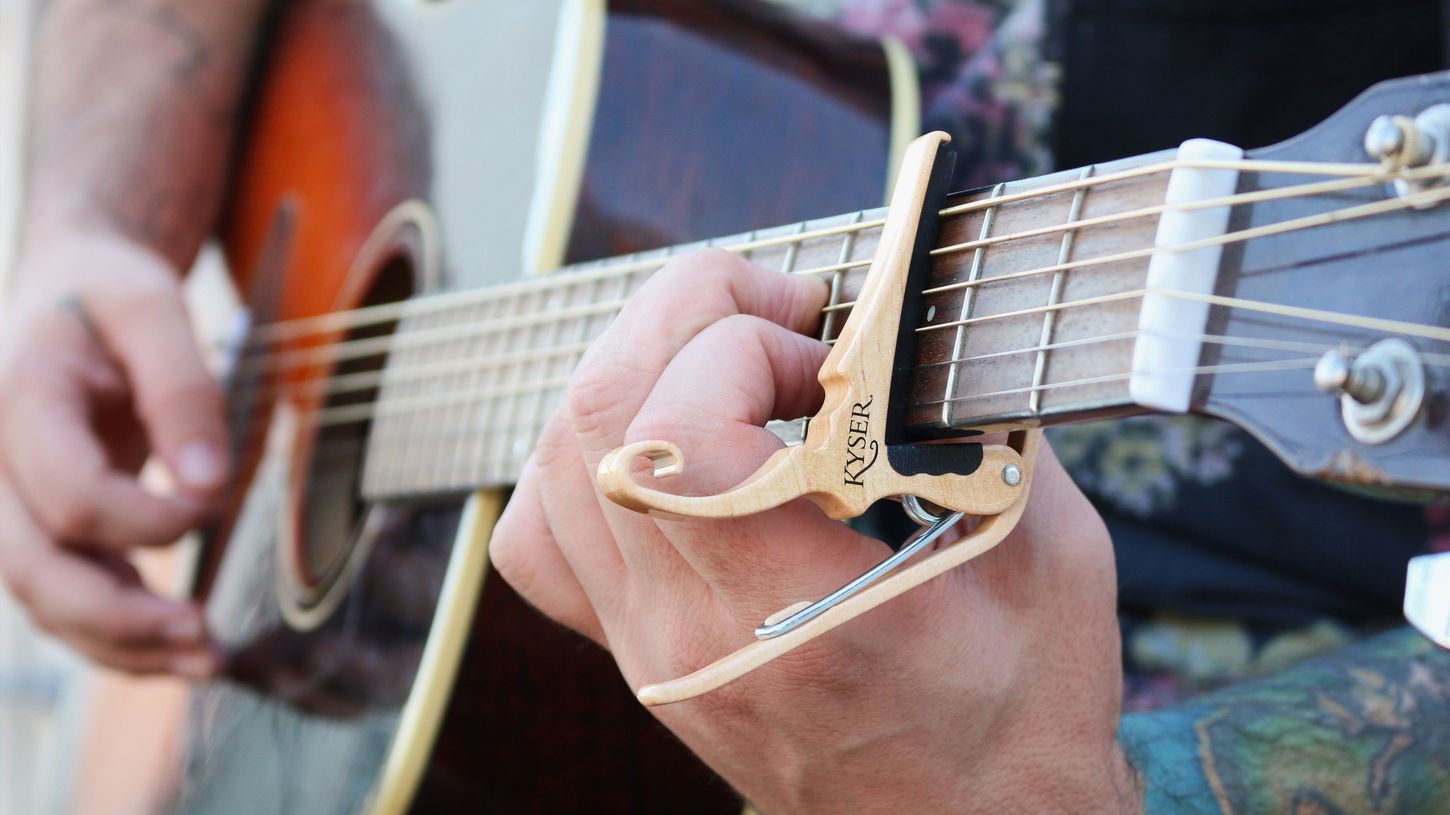

Acoustic
How To Use A Capo On Acoustic Guitar
Published: March 12, 2024
Learn how to use a capo on your acoustic guitar to change the key and play in different positions. Discover tips and techniques for enhancing your acoustic guitar playing.
(Many of the links in this article redirect to a specific reviewed product. Your purchase of these products through affiliate links helps to generate commission for AudioLover.com, at no extra cost. Learn more)
Table of Contents
Introduction
Playing the acoustic guitar is a timeless and rewarding pursuit, allowing musicians to express their creativity and emotions through beautiful melodies and harmonious chords. Whether you're a seasoned guitarist or just starting out, you may have heard of a small yet powerful tool called a capo. In this article, we will explore the art of using a capo on an acoustic guitar, uncovering its versatility and the myriad of possibilities it offers to musicians.
The capo, a simple yet ingenious device, holds the ability to transform the sound of the guitar, opening up a world of new musical opportunities. By understanding how to effectively utilize a capo, guitarists can effortlessly change the pitch and key of their instrument, creating a unique and captivating sound that resonates with listeners.
As we delve into the intricacies of using a capo on an acoustic guitar, we will uncover the various types of capos available, the correct method for placement, and essential tips for maximizing its potential. Additionally, we will explore a selection of popular songs that showcase the creative potential of the capo, inspiring guitarists to experiment with this versatile tool in their own musical endeavors.
Join us on this musical journey as we unlock the secrets of the capo and discover how it can elevate your acoustic guitar playing to new heights. Whether you're a folk enthusiast, a country music aficionado, or a singer-songwriter seeking to enhance your compositions, the capo is a valuable asset that can enrich your musical repertoire and captivate audiences with its enchanting melodies.
What is a Capo?
A capo, derived from the Italian word for "head," is a small yet indispensable tool for acoustic guitarists. It consists of a clamp-like device that is placed across the fretboard of the guitar, effectively shortening the length of the strings. This alteration in string length raises the pitch of the open strings, allowing guitarists to play in different keys without changing the fingerings of the chords.
The primary function of a capo is to adjust the pitch of the guitar, enabling musicians to transpose songs to a higher key. This is particularly useful when accompanying vocalists, as it allows the guitarist to match the key of the song to the singer's vocal range. Additionally, the capo can be utilized to create a brighter and more resonant tone, adding a unique dimension to the guitar's sound.
Beyond its practical applications, the capo serves as a catalyst for creativity, inspiring guitarists to explore new chord voicings and harmonic possibilities. By altering the fretting positions, the capo unlocks a diverse range of melodic and harmonic options, enriching the musical landscape and expanding the guitarist's repertoire.
In essence, the capo is a versatile tool that empowers guitarists to transcend the limitations of standard tuning and explore the full potential of the acoustic guitar. Its ability to effortlessly modulate the pitch and timbre of the instrument makes it an essential accessory for musicians across various genres, from folk and country to pop and rock.
As we continue our exploration of the capo, we will delve into the different types of capos available, each offering unique features and benefits for guitarists. Understanding the nuances of these variations will provide valuable insight into selecting the most suitable capo for individual playing styles and preferences.
Types of Capos
When it comes to capos, there is a diverse array of options available, each designed to cater to the specific needs and preferences of guitarists. Understanding the distinct characteristics of each type of capo is essential for selecting the most suitable one to enhance your acoustic guitar playing experience. Let's explore the various types of capos and their unique features:
-
Spring-Loaded Capo: This type of capo features a spring mechanism that allows for quick and easy attachment to the guitar's neck. The spring-loaded design ensures a firm and consistent pressure on the strings, maintaining stable tuning and sound quality. It is a popular choice among guitarists for its convenience and reliability during live performances and studio recordings.
-
Trigger Capo: The trigger capo, also known as a quick-release capo, is characterized by its ergonomic design and effortless operation. It utilizes a trigger-style mechanism to clamp onto the fretboard, providing swift and secure attachment. The adjustable tension allows for precise control over the pressure exerted on the strings, ensuring optimal intonation and resonance across the fretboard.
-
Toggle Capo: A toggle capo, distinguished by its toggle-style clamping system, offers a versatile and adaptable solution for guitarists. The toggle mechanism enables seamless adjustment and positioning along the fretboard, accommodating various neck profiles and string gauges. This type of capo is favored for its ease of use and ability to maintain consistent pressure on the strings, facilitating smooth transitions between different fret positions.
-
C-Shaped Capo: The C-shaped capo, as the name suggests, features a curved design that conforms to the natural curvature of the guitar's neck. This ergonomic shape ensures uniform pressure distribution across the fretboard, minimizing the risk of fret buzzing and maintaining stable tuning. The C-shaped capo is prized for its ergonomic comfort and compatibility with a wide range of acoustic guitar models.
-
Partial Capo: Unlike traditional capos that cover all six strings, the partial capo selectively frets specific strings while leaving others open. This innovative design unlocks a wealth of creative possibilities, allowing guitarists to experiment with unique tunings and unconventional chord voicings. The partial capo is a valuable tool for expanding the harmonic palette of the acoustic guitar, inspiring inventive compositions and arrangements.
By familiarizing yourself with the diverse range of capo options available, you can make an informed decision based on your playing style, musical preferences, and the specific requirements of your acoustic guitar. Whether you seek rapid functionality, ergonomic comfort, or creative versatility, there is a capo tailored to elevate your musical expression and unlock new dimensions of acoustic guitar playing.
How to Place a Capo on the Guitar
Placing a capo on the guitar is a straightforward yet crucial process that directly impacts the instrument's sound and playability. To ensure optimal performance and sound quality, it is essential to follow the correct procedure for positioning the capo on the fretboard. Here's a step-by-step guide on how to place a capo on the guitar:
-
Select the Desired Fret: Determine the fret at which you want to place the capo. Whether you intend to raise the pitch of the entire guitar or create unique chord voicings, the choice of fret will dictate the resulting sound and tonal characteristics.
-
Position the Capo: With the fret identified, position the capo just behind the targeted fret, ensuring that it sits squarely across the strings and aligns parallel to the fretwire. The capo should exert sufficient pressure to hold down the strings firmly without causing excessive tension or fret buzz.
-
Adjust the Tension: Depending on the type of capo you are using, adjust the tension to achieve an optimal balance between securing the strings and maintaining clear intonation. For spring-loaded and trigger capos, engage the mechanism to apply consistent pressure, while toggle and C-shaped capos may require manual adjustment to achieve the desired tension.
-
Test the String Resonance: After placing the capo, play each string individually to verify that they ring out clearly and sustain their pitch without any muted or buzzing sounds. Make any necessary adjustments to the capo's position or tension to ensure uniform string resonance across the fretboard.
-
Tune the Guitar: Once the capo is in place, tune the guitar to ensure that the strings are accurately pitched. The capo alters the tension and length of the strings, necessitating adjustments to maintain proper tuning. By fine-tuning the strings, you can achieve a harmonious and balanced sound that complements the capo's positioning.
-
Play and Evaluate: With the capo securely positioned and the guitar tuned, play a few chords and melodies to assess the overall sound and playability. Pay attention to the clarity of the chords, the sustain of the notes, and the general feel of the instrument to confirm that the capo is enhancing the desired musical expression.
By following these steps, you can effectively place a capo on the guitar, unlocking a world of musical possibilities and creative exploration. Whether you seek to transpose songs, experiment with alternative tunings, or expand your harmonic repertoire, mastering the art of capo placement is a valuable skill that empowers you to harness the full potential of the acoustic guitar.
Tips for Using a Capo
-
Experiment with Different Fret Positions: While the standard practice is to place the capo behind a specific fret, don't hesitate to explore alternative positions. Moving the capo slightly up or down the neck can yield unique tonal qualities and uncover fresh chord voicings, adding depth and character to your playing.
-
Fine-Tune String Tension: Achieving the optimal balance of string tension is crucial for maintaining clear intonation and resonance. Take the time to adjust the capo's tension, ensuring that it firmly holds down the strings without causing undue strain, resulting in a harmonious and balanced sound.
-
Combine Capo with Open Tunings: Experiment with combining the capo with open tunings to unlock a rich tapestry of harmonic possibilities. By strategically tuning the open strings and utilizing the capo, you can create lush and resonant chord structures that evoke a sense of depth and complexity in your compositions.
-
Explore Partial Capo Techniques: Embrace the creative potential of partial capo techniques, where specific strings are fretted while others remain open. This approach opens the door to unconventional chord voicings and unique harmonic textures, allowing you to craft captivating melodies and arrangements that defy traditional conventions.
-
Adapt Chord Shapes and Fingerings: As you utilize the capo to transpose songs to different keys, take the opportunity to adapt your chord shapes and fingerings accordingly. Embrace the challenge of reimagining familiar chord progressions in new positions, fostering a deeper understanding of the instrument's fretboard and expanding your musical versatility.
-
Integrate Capo with Songwriting: Incorporate the capo into your songwriting process as a tool for sparking creativity and inspiration. By experimenting with different capo positions and chord structures, you can breathe new life into your compositions, infusing them with a sense of dynamism and originality that resonates with listeners.
-
Maintain Consistent Tuning: Regularly check and adjust the tuning of your guitar when using a capo, as the altered string tension may affect the overall pitch. By ensuring consistent tuning, you can deliver a polished and professional performance, free from any discordant notes or tonal inconsistencies.
-
Embrace Versatility Across Genres: Whether you're drawn to folk, blues, or contemporary pop, the capo is a versatile ally that transcends genre boundaries. Embrace its adaptability and explore its potential across diverse musical styles, discovering new avenues for creative expression and musical innovation.
By incorporating these tips into your acoustic guitar playing, you can harness the full potential of the capo, elevating your musicality and expanding your artistic horizons. Embrace the spirit of experimentation and creativity, allowing the capo to serve as a gateway to a world of captivating melodies and harmonious arrangements.
Popular Songs to Play with a Capo
The capo is a versatile tool that has left an indelible mark on the world of music, enabling guitarists to reimagine classic songs and craft captivating renditions that resonate with audiences. Whether you're an aspiring musician or a seasoned performer, incorporating a capo into your repertoire opens the door to a myriad of iconic songs that are enhanced by its transformative capabilities. Here are some popular songs that shine brightly when played with a capo:
-
"Wonderwall" by Oasis
- Utilizing a capo on the second fret, "Wonderwall" comes to life with its distinctive chord progression and evocative lyrics. The capo elevates the song's melodic allure, allowing guitarists to channel the timeless appeal of this beloved anthem.
-
"Tears In Heaven" by Eric Clapton
- With the capo positioned on the third fret, "Tears In Heaven" takes on a poignant resonance, accentuating the heartfelt emotion woven into its poignant melody. The capo enriches the song's tender nuances, inviting guitarists to convey its soul-stirring essence with heightened sensitivity.
-
"Hey There Delilah" by Plain White T's
- Placing the capo on the third fret infuses "Hey There Delilah" with a luminous charm, enhancing its endearing simplicity and heartfelt sentiment. The capo empowers guitarists to evoke the song's tender nostalgia, capturing the essence of its enduring appeal.
-
"Hotel California" by Eagles
- When paired with a capo on the seventh fret, "Hotel California" resonates with an ethereal allure, accentuating the song's enigmatic allure and intricate chord voicings. The capo unlocks the song's captivating mystique, inviting guitarists to embark on a mesmerizing musical journey.
-
"Hallelujah" by Leonard Cohen
- Positioned with a capo on the fifth fret, "Hallelujah" radiates with a transcendent beauty, amplifying the song's profound lyricism and haunting melody. The capo imbues the song with a poignant resonance, empowering guitarists to convey its timeless poignancy with grace and reverence.
By embracing these popular songs and infusing them with the transformative power of the capo, guitarists can breathe new life into timeless classics and forge a deep connection with their audience. The capo serves as a conduit for musical expression, enriching these beloved songs with a renewed sense of vitality and emotional depth. As you embark on your musical journey, allow the capo to be your trusted companion, guiding you through a world of captivating melodies and timeless harmonies.
Conclusion
In conclusion, the capo stands as a testament to the ingenuity and versatility of acoustic guitar playing, offering a gateway to a realm of musical exploration and creative expression. From its humble origins as a simple clamp-like device to its pivotal role in reshaping the sonic landscape of countless songs, the capo has left an indelible mark on the world of music.
As we have delved into the intricacies of using a capo on an acoustic guitar, we have uncovered its transformative power, enabling guitarists to effortlessly modulate the pitch, key, and tonal characteristics of their instrument. Whether it's accompanying vocalists, crafting evocative renditions of classic songs, or exploring new chord voicings and harmonic textures, the capo serves as a catalyst for innovation and artistic growth.
The diverse array of capo types, from spring-loaded and trigger capos to partial capos, offers a tailored solution for every guitarist, catering to individual playing styles and musical preferences. By understanding the nuances of each type, guitarists can make informed decisions to enhance their playing experience and unlock new dimensions of musicality.
Furthermore, the placement of a capo on the guitar, when executed with precision and care, can yield a harmonious and resonant sound that captivates listeners. The correct positioning, coupled with fine-tuning the tension and maintaining consistent tuning, ensures that the capo optimally enhances the guitar's sonic capabilities, allowing for seamless transitions between different fret positions and tonalities.
As guitarists embrace the capo's potential and incorporate it into their musical endeavors, they gain access to a treasure trove of popular songs that shine brightly when played with a capo. These timeless classics, infused with the transformative capabilities of the capo, resonate with heightened emotion and allure, forging a deep connection with audiences and showcasing the boundless creativity that the capo inspires.
In essence, the capo transcends its physical form to become a symbol of musical innovation and artistic freedom. It empowers guitarists to break free from the constraints of standard tuning, explore new sonic territories, and breathe new life into their compositions. Whether you're a seasoned performer or an aspiring musician, the capo invites you to embark on a musical journey filled with enchanting melodies, evocative harmonies, and boundless creativity.
So, as you pick up your acoustic guitar and reach for the capo, remember that you hold in your hands a tool that has the power to transform ordinary chords into extraordinary expressions, and ordinary songs into timeless masterpieces. Embrace the capo as your ally, your muse, and your guide, as you embark on a musical odyssey filled with endless possibilities and unbridled passion.


